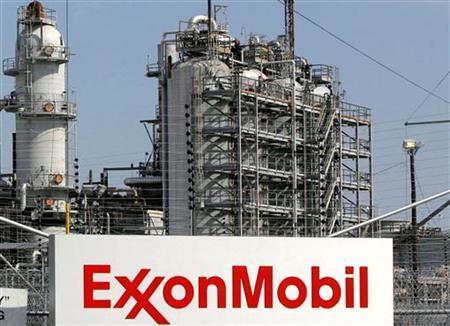
A lot has happened to Exxon Mobil Corp. in the past 12 months, not least ex-CEO Rex Tillerson leaving in order to become Secretary of State (he may be confirmed on Wednesday).
In one important respect, though, the oil major is in the same position it was this time last year.
In early 2016, the oil sector was in free fall, but Exxon was stuck in a rut. As I wrote here, it was too tied to oil to beat the market if energy prices remained depressed but not tied closely enough to beat smaller E&P rivals if there was a recovery.
That’s pretty much how the past year played out.
As 2017 gets underway, this dilemma still holds.
Fairy Tale Character Exxon’s Stock Least Resembled in 2016
Goldilocks
Exxon’s great advantage is its well-earned reputation for being the proverbial steady ship. This has taken a series of hits over the past year, culminating in Tuesday’s fourth-quarter results announcement.
Exxon beat earnings estimates, and it managed a rebound in production from the previous quarter’s dismal showing. Still, some of those earnings came from an unusual positive swing in the corporate income line, and production was still 3 percent lower than a year earlier.
Overshadowing it all was a $2 billion asset impairment — about as rare as a comet sighting when it comes to Exxon. Even if you add the charge back in, the company’s upstream U.S. business — weighed down by a high exposure to low natural gas prices — clocked up its eighth straight quarterly loss. Meanwhile, although the final number won’t be known for a couple of weeks, Exxon has warned already that some proved reserves in Canada will be de-booked due to low prices — at least temporarily — setting the company up for another set of weak reserves replacement figures.
Consequently, while Exxon’s traditional valuation premium to its peers actually increased in 2015, the first year of the oil crash, that all changed in 2016:
Oh the humanity and all that. Still, a 50 percent premium remains big in absolute terms; it would be a stretch to say Exxon’s stock is a screaming value play.
Once again, therefore, an investor in the sector faces a dilemma on the stock.
If you can trust in OPEC’s supply cuts and not worry about potential trade conflicts emanating from the White House, then U.S. E&P stocks will likely benefit more sharply than Exxon from the increase in oil prices. That’s especially so given the potential for windfall profits in the near term if the U.S. adopts a proposed border-adjustment tax (this could also potentially hurt global oil majors like Exxon).
Meanwhile, if oil stays flat or even falls, then it’s hard to see Exxon doing better than the market overall, similar to 2016. For one thing, it would crimp the major’s ability to restart stock repurchases. Last year’s cash flow from operations and selling assets was still a staggering $26.4 billion, but that was not enough to cover $31.8 billion of capital expenditure and dividends.
So when Tillerson’s successor, Darren Woods, takes the stage for his first annual Exxon analyst day in a month’s time, he will at least enjoy the privilege of starting at a low point.
Plus, with several new projects due to start up in 2017, analysts currently forecast Exxon to make $16.6 billion of free cash flow, according to data compiled by Bloomberg. That would be enough to cover the dividend, at least.
Woods’ big challenge, though, is to restore the company’s calling card: return on capital. Investing and acquiring at the top mean returns have dropped from about 24 percent in 2006 — when Tillerson took the helm — to, by my calculation, an estimated 4 percent in 2016 .
That Exxon is, unusually, raising its investment budget this year can be viewed as a sign of confidence. Equally, though, investors will require more to take it as such.